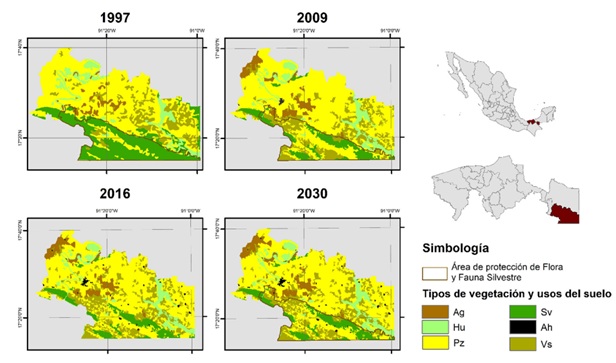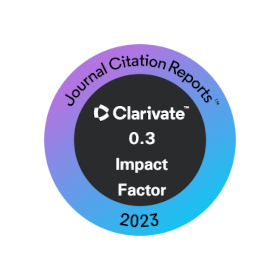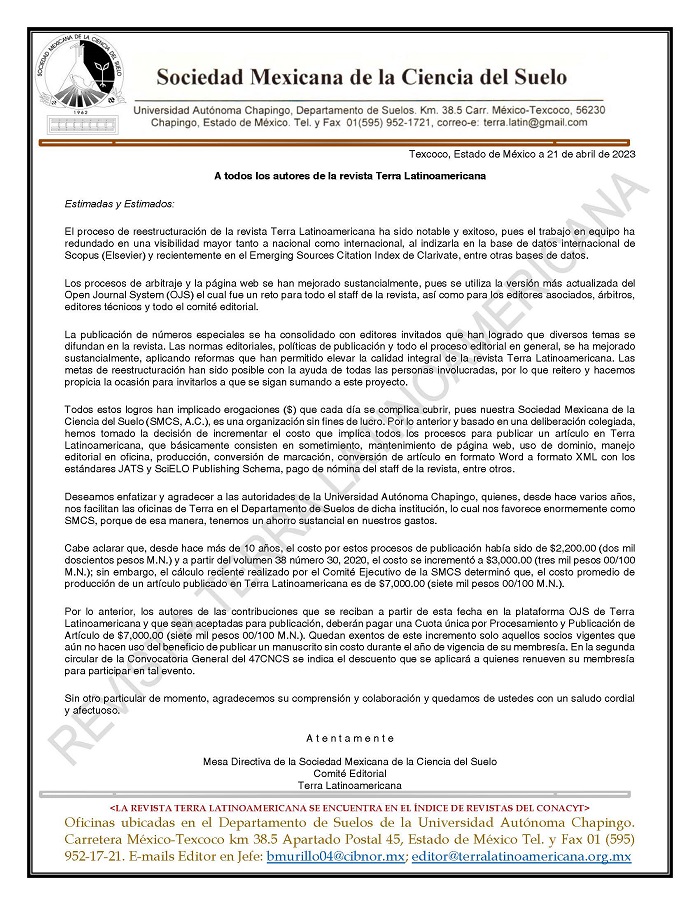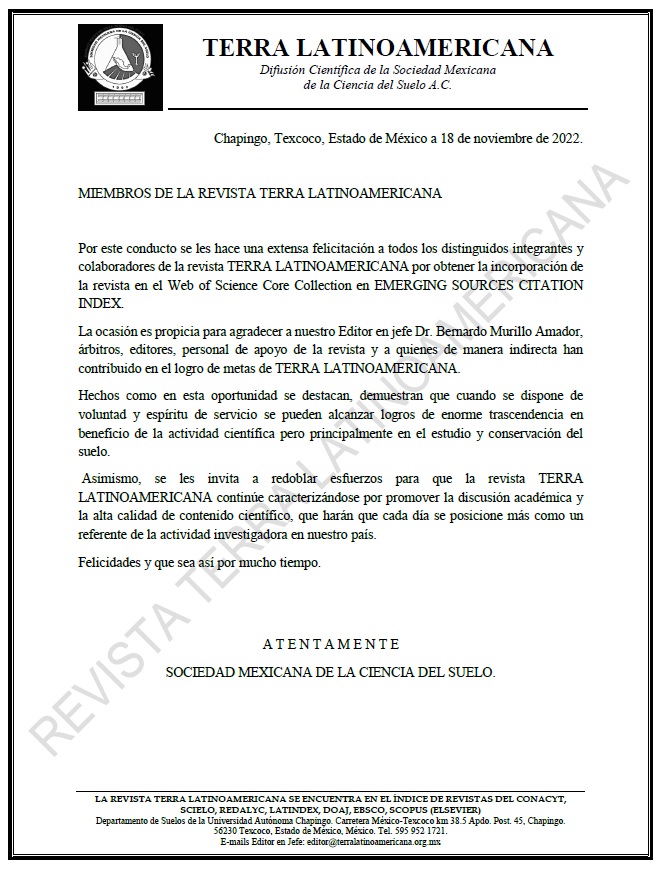Modeling of Land use Change and Projection in Tenosique, Tabasco, Mexico
DOI:
https://doi.org/10.28940/terra.v43i.1821Keywords:
cellular automata, Markov chains, territorial ecological planningAbstract
Tenosique, Tabasco is an important cross-border territory between Mexico and Guatemala due to the presence of tropical forests that provide an optimal space for the maintenance of biodiversity and the provision of environmental services. However, its current spatial dynamics are unknown, relevant information for the creation of environmental planning strategies in the Southeast of Mexico. For this reason, the objective of this work was to model land use change from 1997 to 2009 and 2016, using the Land Change Modeler. In addition, a 2030 scenario was constructed using stochastic transition models (Markov chains and cellular automata). The results show a loss of forests of more than 30 000 ha from 1997 to 2016 that were transformed into secondary vegetation, but mainly into pastures for cattle ranching. If this trend continues, it is expected that by 2030 the area of forests in the municipality will be reduced to 7% of the area. This work indicates that it is necessary to establish new conservation, restoration, and management strategies through an ecological management program of the municipality in coordination with the federal authorities that manage the Flora and Fauna Protection Area, Usumacinta Canyon.
Downloads

















